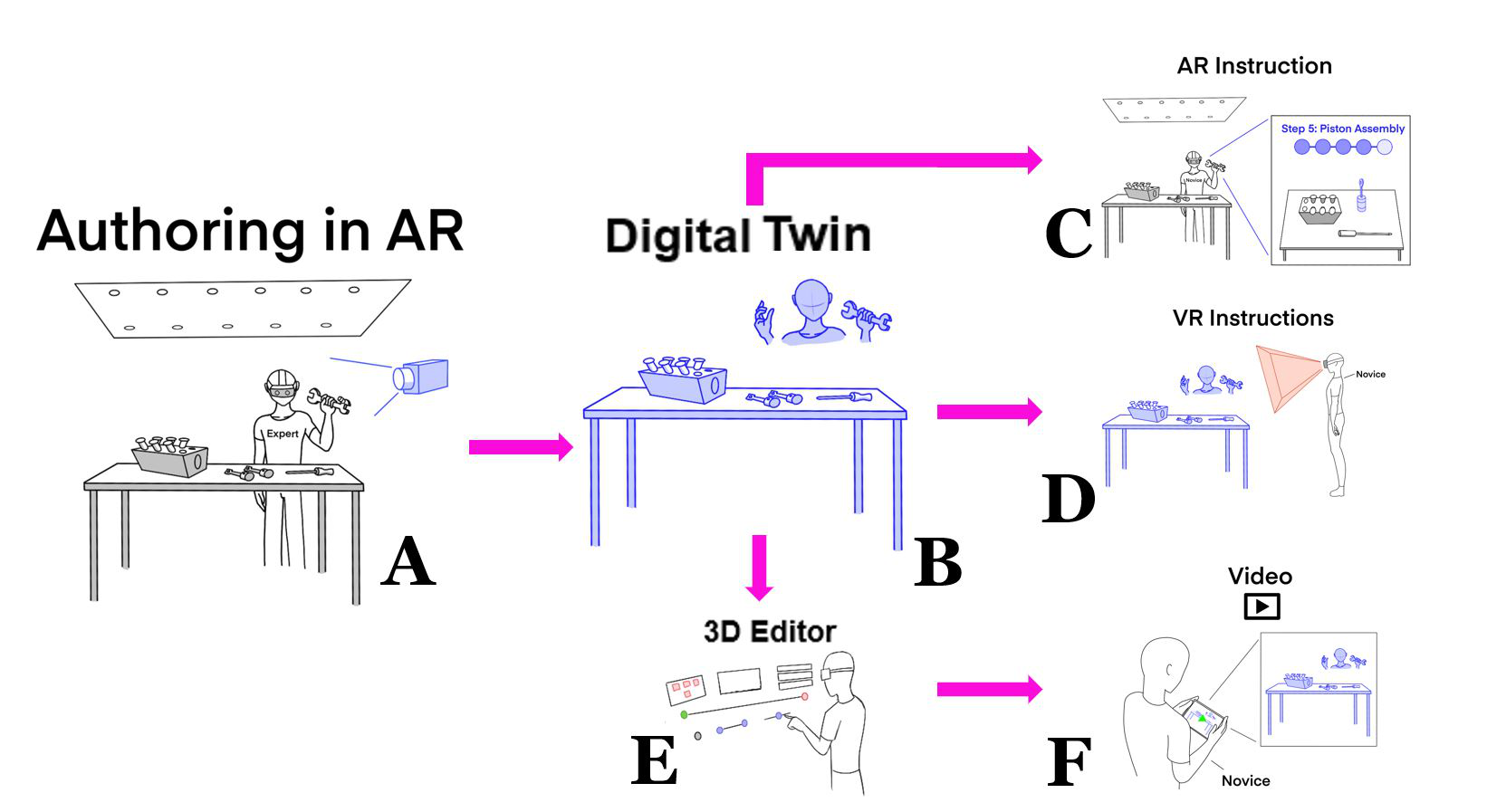Augmented/Virtual reality and video-based media play a vital role in the digital learning revolution to train novices in spatial tasks. However, creating content for these different media requires expertise in several fields. We present EditAR, a unified authoring, and editing environment to create content for AR, VR, and video based on a single demonstration. EditAR captures the user’s interaction within an environment and creates a digital twin, enabling users without programming backgrounds to develop content. We conducted formative interviews with both subject and media experts to design the system. The prototype was developed and reviewed by experts. We also performed a user study comparing traditional video creation with 2D video creation from 3D recordings, via a 3D editor, which uses freehand interaction for in-headset editing. Users took 5 times less time to record instructions and preferred EditAR, along with giving significantly higher usability scores.
EditAR: A Digital Twin Authoring Environment for Creation of AR/VR and Video Instructions from a Single Demonstration
Authors: Subramanian Chidambaram, Sai Swarup Reddy, Matthew Rumple, Ananya Ipsita, Ana Villanueva, Thomas Redick, Wolfgang Stuerzlinger, Karthik Ramani
In 2022 IEEE International Symposium on Mixed and Augmented Reality (ISMAR)
10.1109/ISMAR55827.2022.00048

Subramanian Chidambaram
Subramanian Chidambaram is a Ph.D. student in the School of Mechanical Engineering at Purdue University. Before joining the C Design lab, he obtained his Master’s from the School of Aeronautics and Astronautics with a Minor in computational science and engineering from Purdue and a Bachelor’s degree in Mechanical engineering from Vellore Institute of Technology, India. His current research interest involves exploring Human-Computer Interactions and Code-less Digital interface development for Authoring Augmented Reality (AR) and Virtual Reality (VR) content, Collaboration with AR/VR, and instructional design for skill transfer using immersive reality and 3D User Interface. In addition, he has co-authored papers on tangible interfaces. In the past, he has also researched developing geometric modeling tools that guide novices to design, analyze and fabricate functional load-bearing structures.
Personal Website
Personal Website
